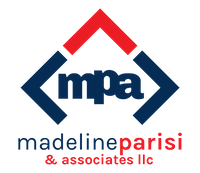Some changes are subtle. Some changes are disruptors. Blockchain is a subtle disruptor.
I have been working recently to understand blockchain, despite the fact that it has been around since 2008. At first dismissing it because it seemed only relevant to Cryptocurrency, I realize this has the potential to change many industries, even eliminating several professions.
At a recent dinner with friends, as the bill came and everyone pulled out credit cards, I made the comment that as cash has gone, so too will credit cards (A real tragedy for me as I am one of those travelers who pays for entire trips with miles and points!). I started talking about blockchain, and not one person knew the term or concept. So here is my Blockchain for Unaware i.e. an overview in lay terms.
Although some of the terms are very familiar in an accounting and finance environment, they are used here in different ways. Blockchain is a decentralized, shared, digital ledger structure. Essentially a group or groups of information that is connected to a specific matter. The blockchain system provides a means for information to be shared among multiple parties, but the information may not be altered. Each transaction is digitally stamped and attached to a block of existing data, which becomes a chain (of data). The authentication is between the parties, or a group, involved in the transaction. Once all parties verify and agree on the transaction, the data is stored on each user’s device. The transaction is transparent and easily reviewed, and creates an audit trail.
This process eliminates external third parties and the third-party authentication process. It becomes a faster and less expensive way to transact business, and some may argue a safer way. Although we have learned that nothing is impenetrable, and that anything may be hacked, a hacker must bypass the encryption, not just on one system or device but, on the devices of all the participants in the transaction. In addition, information must be authenticated by multiple parties – no single person or entity operates alone. Because of this, it is more difficult to penetrate and any breach or intrusion may even be spotted earlier in the process and thwarted.
How will some of the industries we know so well change or possibly be eliminated with the explosion of blockchain? Here are a few to consider:
Audit/Auditing – Not going away, but certainly changing! As noted, blockchain still creates an data/information trail and transaction compliance will continue to be required. The need for auditors with more IT knowledge and experience will rise. It may lead to a more synergistic relationship and support between the business operations, systems, and audit, and may even lead to auditors as part of the development team, a role not often seen.
Credit Card Processing – Why a separate service? Transfer funds between users directly from your smartphone or other device. Each user has both a public key and a private key. The public key is given out for the transfer of funds or data from one user to another. Only an individuals’ private key may release funds, with all authenticated, in real-time, and at no cost. With much of the credit card processing happening through banks and providing a large revenue stream, the move to blockchain makes this a financial risk for financial institutions and credit card processing services.
Financial Institutions – Transactions including documents and currency may be transferred to another connected user without a financial institution facilitating the transmission. Property rights? Mortgages? All that paperwork to verify. With all the functionality in the blockchain process and significantly less transactional time, the transactions will occur without the need of multiple hands in the process. Remember the late 90’s when any Conference worth its weight had to include a session on “The Paperless Office” and, then we realized it’s really “The Less Paper Office”? Blockchain may help us get to that paperless office.
Home Mortgage – Each mortgage becomes its own block. The parties involved (and there are many) all share the same chain of information with everyone who is a part of that block. Rather than multiple sources generating independent files and documents and on separate systems, all information involved in the transaction is stored in one place. Only the participants involved in the transaction have access, and must sign-off i.e. validate the transaction. This will expedite processing time, create a common documentation trail and audit trail, and is more secure than information on multiple networks where security levels are uncertain. The impact on real estate transactions is anticipated to be one of the largest changes.
Legal – This may be one of the professions seeing the greatest impact. Think contracts and legal documents, and recording them in the proper location, secure storage and destruction, the time and cost. Now think about a rising and a soon-to-be rising demographic that lives in the NOW! and grew up in front of screens learning how to do everything themselves. Law firms will experience the change for many of the same reasons in Home Mortgages – number of partieso the proc involved in a single matter, data and documentation created, and most importantly is the time the current process takes. Next question is how does this impact billables? Law firms and legal processes will need to adapt. The questions is “Are they even thinking about it?”
Notary Publics – Most useful when a signature or a document must be validated. Blockchain provides an internal validation process as well as a time and date-stamped transfer plus storage for transaction.
Will there be emerging industries for blockchain?
Disaster Aid/Relief – Often relief aid does not make it to the needed geo-location and once at the location, those in need have no documentation to release the funds and/or supplies. Mismanagement and theft also keep needed relief from the intended recipient. Blockchain verification will eliminate the distribution backlog, and because of the authentication amongst the parties in the transaction, it will eliminate the misappropriation of funds or supplies. More participants in the aid process will be held accountable for the funds or supplies. (It was reading a Fast Company story about this particular use that peaked my interest in finally understanding the blockchain concept. https://www.fastcompany.com/40457354/how-blockchain-could-transform-the-way-international-aid-is-distributed)
Intellectual Property – Part of the Legal changes, but also becoming its own market. The digital age has made sharing commonplace. Record and share; download and post. Companies brazen enough to stream without royalties and no one seems to be concerned – unless, of course, you are the author or artist. My crystal ball says that the entire patent and trademark system, as we know it today, is in for a massive restructuring, and blockchain is well-positioned to accommodate the need.
Miners – The term for authenticators in the blockchain transaction, which may create a new cottage industry! And then the cycle begins again, with a new platform and new terminology, until the next biggest disruptor comes along.
Madeline Parisi & Associates (MPA), is a registered Women Owned Business (WBE) located in Barrington, Illinois. The primary goal for Madeline Parisi & Associates is to match your training and consulting needs to the proper provider to ensure we exceed your required goals and outcomes. Contact Madeline Parisi at Madeline@madelineparisi.com



